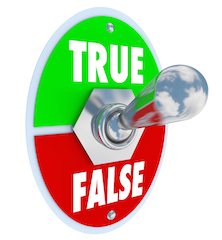As a financial advisor, you’ve no doubt made your fair share of mistakes. And hopefully you’ve apologized to your client(s) afterward and promised to make things right.
But there’s a big difference between a perfunctory apology and a heartfelt one. A weak apology won’t help your cause much and may, in fact, anger the customer even more. But a strong one will repair the damage, retain the customer, enhance your company’s brand, and hopefully prevent an errors-and-omissions insurance claim.
To see how this works, here’s a real-life case study on how to apologize the right way. The situation: a national telecommunications company suffered a residential e-mail outage in several of its regions lasting three days. As you can imagine, this infuriated its customer base. As soon as the failure occurred, the company began posting alerts on customer’s Internet browsers, continuing to update them during the hours and days that followed.
After the company restored service, it e-mailed customers the following message. The paragraphs are numbered and broken into their component parts to facilitate discussion. Ready? OK, here we go.
Dear [company] email user,
- We owe you an apology for your recent experience with our residential email service.
- We pride ourselves on delivering your most important connections, and candidly, we recognize that did not happen.
- We are focused on how we can improve your trust in our service and with our company. Our hope is that we have begun to do that with this apology and explanation.
- On Friday, we experienced a storage platform failure in our production environment. Both our primary and back-up storage devices that support email service were affected. Dozens of engineers worked with our storage vendor and have isolated what caused the platform in our Midwest and East Coast regions to go down. Every resource was made available to restore services to all affected customers as soon as possible.
- The multiple components and processes that make up our email system required time to bring back online, and care to ensure that no messages were lost.
- This week, we began to replace the storage platform as part of our efforts to ensure this issue does not happen again.
- We understand that email is an important component of your High Speed Internet service, and we deeply regret the impact this outage had, especially at a time when you are busy preparing for holiday celebrations with your family and friends.
- On behalf of the 20,000 employees who proudly serve our customers, I hope you’ll accept our most sincere apologies.
OK, do you think the apology worked? We do, and here’s why, by numbered paragraph:
- No reason to beat around the bush. The company immediately admits it owes customers an apology. Love it!
- The company then mentions its commitment to excellence as a lead-in to its admission of failure. Starting with a strong positive helps to take the sting out of the negative.
- Then it admits it has violated their customers’ trust and wants to win it back, starting with an apology. Again, being direct and sincerely wanting to apologize goes a long way toward neutralizing consumer fury.
- Then the company explains what happened and how it reacted.
- Next, it explains the complexity of its repair effort and why it took so long.
- Then it explains steps taken to ensure this doesn’t happen again.
- After reviewing the facts and measures taken, the company now shows that it understands why consumers were so angry, being without e-mail service during the holidays. Expressing empathy is a great way to begin rebuilding consumer satisfaction.
- Finally, it ends with a strong apology, not just from the Customer Service Vice President, but from the company’s entire workforce of 20,000 employees, who “proudly serve” their customers. Another excellent example of using positive words to neutralize negative events.
So would that message make you feel better about the Internet provider? Would you be more willing to renew your account now, even though you were off the Internet for three days? Would you stop ranting about them on on Facebook or complaining about them to friends over dinner? We believe many reasonable consumers would.
Why not borrow from their playbook and invest more time in crafting your client apologies, especially in writing. The following guidelines will help you get it right:
- Keep your message short and direct.
- Start with the apology.
- Pair damaging admissions with positive statements.
- Acknowledge the importance of trust.
- Express your sorrow over violating that trust.
- Disclose all relevant facts about the service breakdown.
- Explain reasons for recovery delays.
- Demonstrate strong empathy for inconvenienced clients.
- Finally, apologize in no uncertain terms.
• Have your own case study of an apology that made amends or a comment on this article? Please share it on this new thread: How to make amends when something goes wrong
Harry J. Lew is Chief Content Officer for the National Ethics Association. For more information on ethical business practices, please visit the National Ethics Association’sEthics Center. For more information on affordable errors and omissions insurance for low-risk financial advisors, visit E&OforLess.com.













